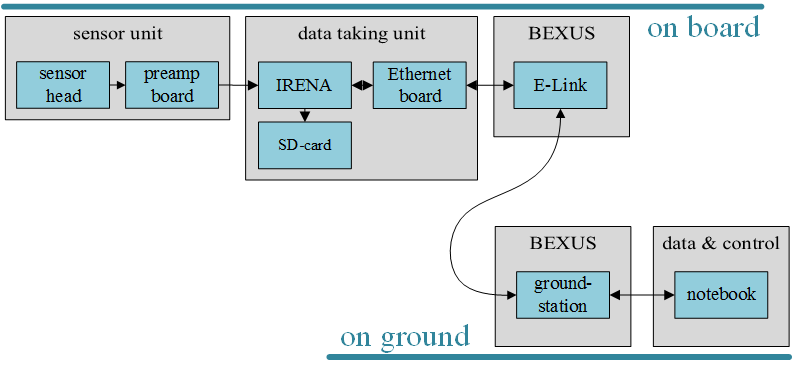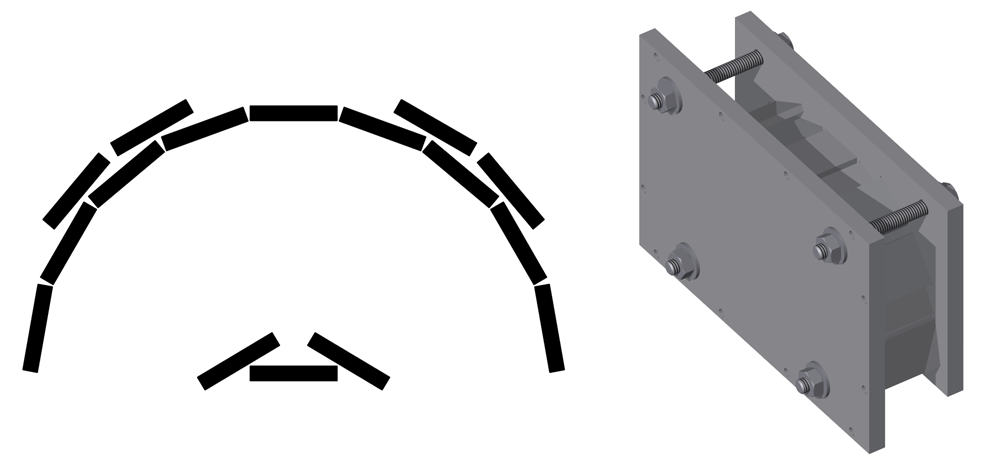To determine the angular distribution of charged particles during the BEXUS balloon flight we are developing an instrument called EVA (Experiment to Visualise Angular distribution). It consists of:
- a sensor head, which will include 16 silicon based Solid-State-Detectors (SSD), also to be referred to as photodiodes. Each of the SSDs can detect incoming particles individually causing a little voltage peak that can be read out by the second part
- a data acquisation system from our institute called IRENA, a new developed 18-channel-charge-sensitive-preamp-board and several other electronic boards that provide an infrastructure for the IRENA (Ethernet, USB, RS232, power).

The diagram above lists the subsystems of EVA and their interactions.
When a charged particle hits one of the 1cm x 2 cm big rectangular SSDs it deposits energy in it. This pulse is registered, amplified by the 18-channel preamp board, digitalised and then stored on a microSD card by the IRENA. Pulses of each SSD will be written out individually. This allows us to detect one and the same particle with mutliple SSDs, we call this a coincidence. Becasue the geometric arrangement of each SSD in the sensor head is well known we can narrow down the arrival angle of a particle that EVA measured in coincidence with up to four SSDs.
The arrangement of the SSDs can be seen in the picture below. To hold the SSDs in place we will tuck them between two plates that will be manufactured using a 3D-printer.
 To determine the best geometric arrangement of the SSDs in the sensor head was one important task during the design phase of EVA. Therefore we simulated several sensor head designs using the GEANT4 toolkit, which is a toolkit for the simulation of the passage of particles through matter developed by CERN.
To determine the best geometric arrangement of the SSDs in the sensor head was one important task during the design phase of EVA. Therefore we simulated several sensor head designs using the GEANT4 toolkit, which is a toolkit for the simulation of the passage of particles through matter developed by CERN.
To prevent EVA from cold temperatures that will occur in 25km height the instrument will be packed into an insulation box. Temperatures will fall down to approxametly -40°C during the flight. The insulation will keep the heat produced by the instrument’s electronics and the heat-loss to the air in balance without making use of an active heating.
To prevent damage to the instrument from possible vibrations or shocks during flight/landing EVA is connected to the gondola via a set of rubber buffers. The picture below shows a CAD rendering of EVA.

